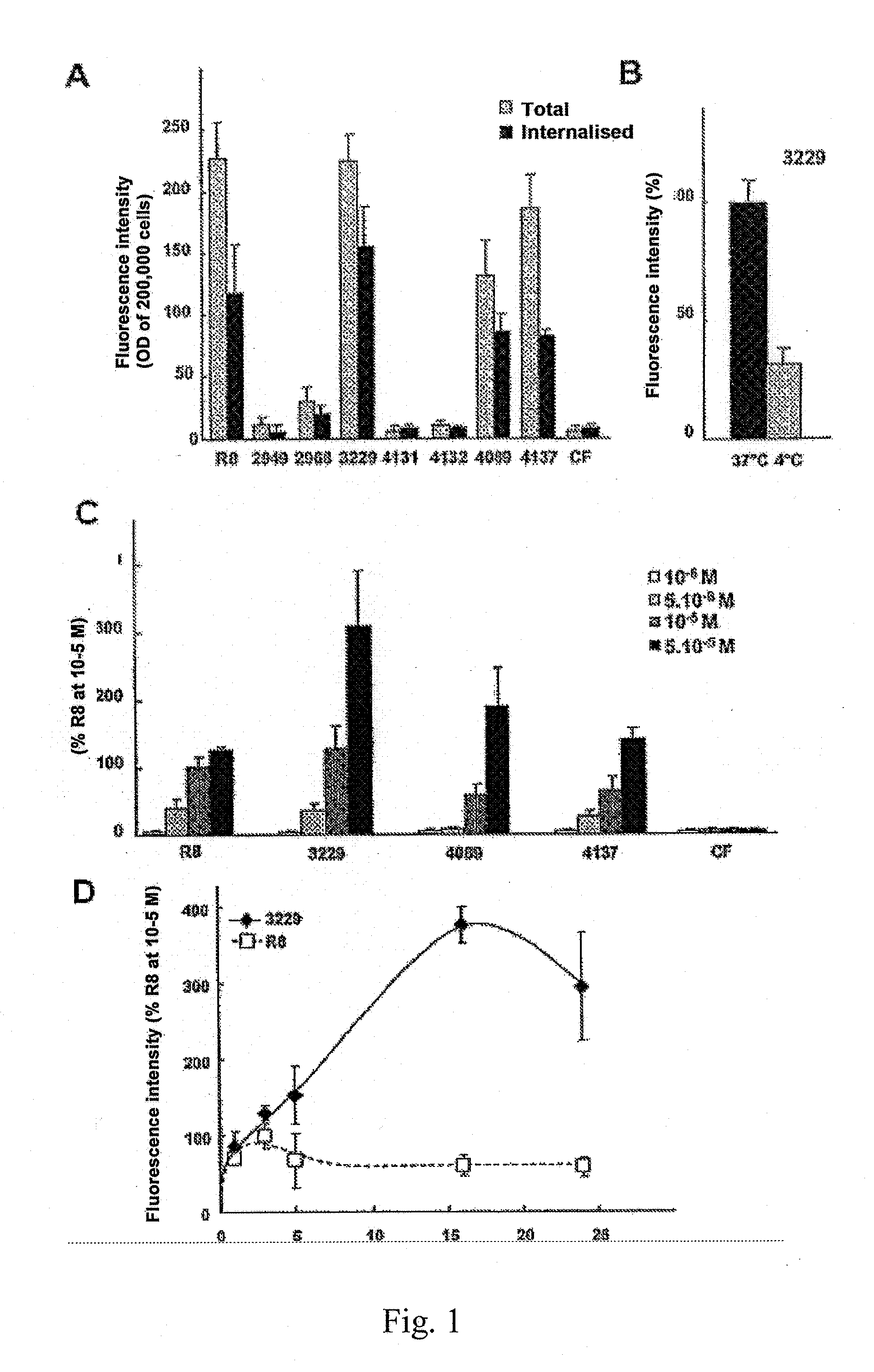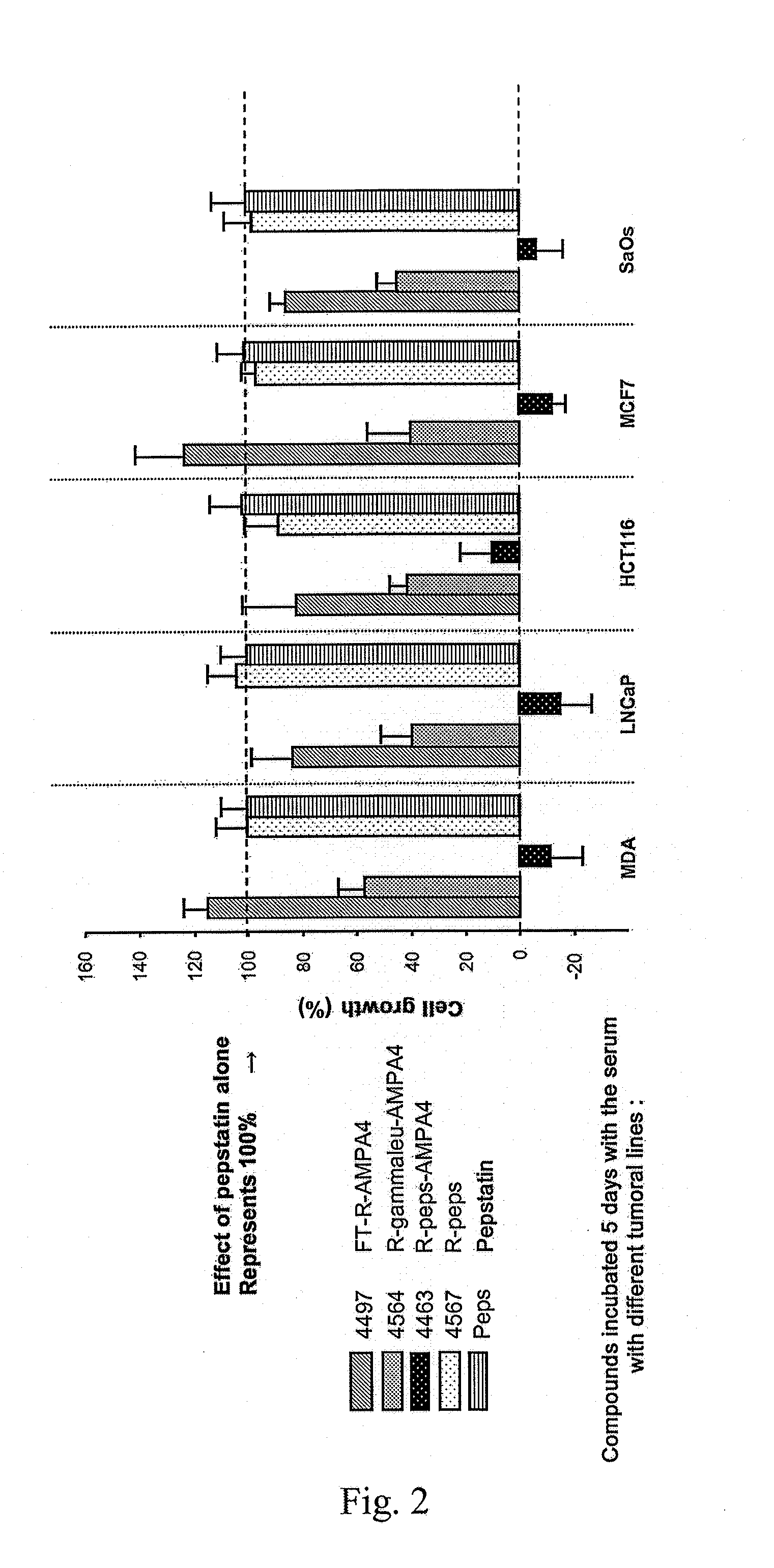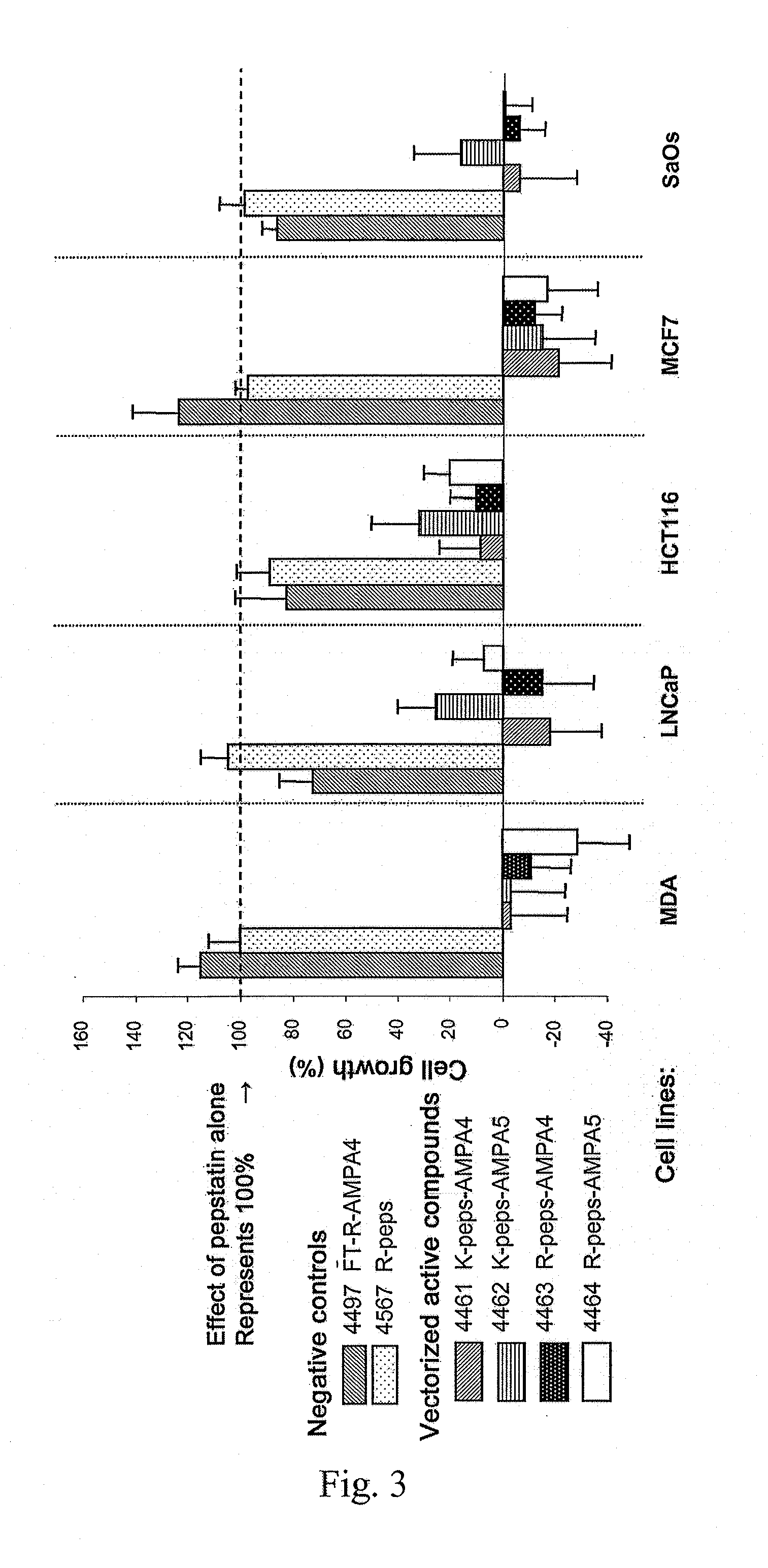Use of constrained dipeptide and tripeptide mimic oligomers as vectorization agents
a technology of mimic oligomers and dipeptides, applied in the field of compounded dipeptides and tripeptide mimic oligomers as vectorization agents, can solve the problems of inability to pass through, risk of rapid destruction of vector/active molecule conjugates in vivo, and active substances through the plasma membrane and their access to the various intracellular channels
- Summary
- Abstract
- Description
- Claims
- Application Information
AI Technical Summary
Benefits of technology
Problems solved by technology
Method used
Image
Examples
example 1
Synthesized Oligomers
[0137]Oligomers of different sizes have been synthesized. These oligomers may be of hydrophobic, hydrophilic or amphipatic nature as a function of the mimics used. They have the ability to pass through the cell membranes and are probably internalised by endosomal route. In order to monitor the internalisation of the oligomers in the cells by fluorescence microscopy, fluorescein isothiocyanate has been used. The fluorescent probe (fluorescein) is introduced, either directly on the N-terminal end of the poly-CM (CM=constrained mimic) anchored to the resin (compounds 1 to 3 and 7) or on the amine function of a spacer (compounds 4-6 and 8-9). The importance of the configuration has been evaluated by the preparation of derivatives of DBT (compounds 1-6) and of LBT (compounds 7-9).
example 2
[0138]First of all, the oligomers bearing the fluorescent probe are tested for their ability to penetrate into the cells (MDA-MB-231 breast cancer lines). Typically, two experiments are carried out: measurements of the total fluorescence by fluorimetry after arranged trypsinisation and lysis of the cells, and by confocal fluorescence microscopy with specific markers of cellular organites.
[0139]Tetraoligomers of DBT are capable of internalising themselves in cells with the same efficiency as octa-arginine (R8) described by Wender's group (Standford, USA) and which forms part of the reference CPP described to date in the literature. Specific markers make it possible to demonstrate that these compounds are internalised by endosomal route and are localised after 16 hours in lysosomes. This specific localisation has a certain interest for targeting certain pathologies: lysosomal diseases, Alzheimer's disease, certain cancers.
[0140]Firstly, the quantity absorbed and t...
example 3
Analysis of the Temperature Factor
[0143]An analyse of the dependence of the internalisation vis-à-vis temperature has been carried out by incubating cells with 10−5 M of JMV3229 at 4° C. and 37° C. (FIG. 1B). The cellular absorption is reduced by three at low temperature suggesting an energy dependent endocytotic passage, rather than a passive penetration of the oligomer in the cell.
PUM
| Property | Measurement | Unit |
|---|---|---|
| pharmaceutical composition | aaaaa | aaaaa |
| lipophilicity | aaaaa | aaaaa |
| stability | aaaaa | aaaaa |
Abstract
Description
Claims
Application Information
 Login to View More
Login to View More - R&D
- Intellectual Property
- Life Sciences
- Materials
- Tech Scout
- Unparalleled Data Quality
- Higher Quality Content
- 60% Fewer Hallucinations
Browse by: Latest US Patents, China's latest patents, Technical Efficacy Thesaurus, Application Domain, Technology Topic, Popular Technical Reports.
© 2025 PatSnap. All rights reserved.Legal|Privacy policy|Modern Slavery Act Transparency Statement|Sitemap|About US| Contact US: help@patsnap.com



